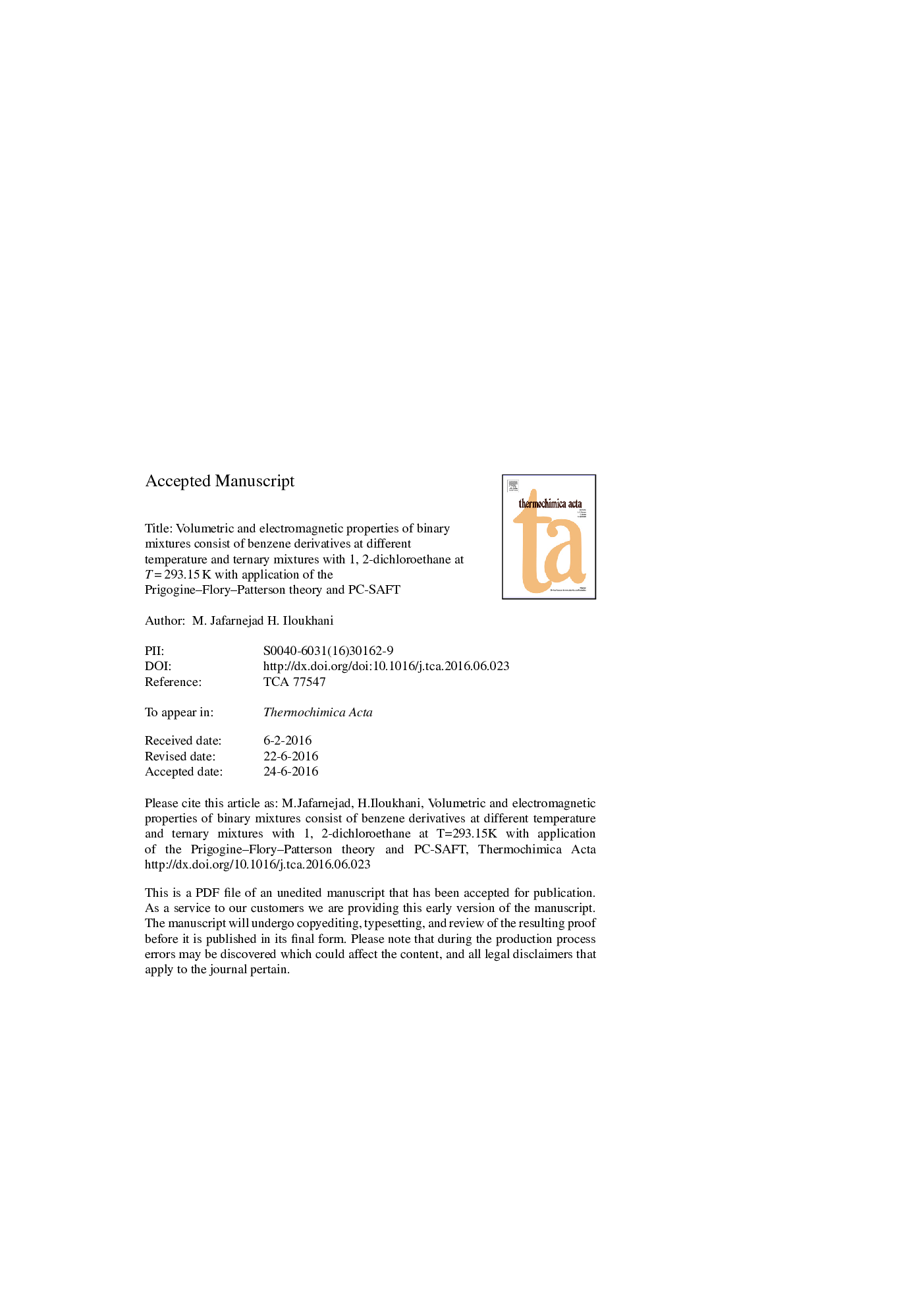| Article ID | Journal | Published Year | Pages | File Type |
|---|---|---|---|---|
| 672663 | Thermochimica Acta | 2016 | 32 Pages |
Abstract
The densities, Ï and refractive index, nD of binary mixtures consisting of bromobenzene, chlorobenzene, nitrobenzene have been measured for the whole range of composition at wide range of temperatures (T = 293.15-333.15 K) in 10 K intervals and their ternary mixture with 1, 2-dichloroethane determined at T = 293.15 K in ambient pressure (81.5 kPa), using Anton Paar DMA 4500 oscillating densimeter and Anton Paar Abbemat 500 automatic refractometer. From experimental data, excess molar volumes VmE for ternary and binary mixtures were derived. Partial molar volumes Vi¯, apparent molar volumes VÏi and refractive index deviations ÎnD of binary mixtures were calculated also and VmE and ÎnD for binary mixtures were correlated with the Redlich-Kister polynomial equation. A comparative study has been made of the refractive indices obtained experimentally and those calculated by means the theoretical relations. Excess molar volume of ternary mixtures were fitted with Cibulka, Singh, and Nagata equations and four geometrical solution models were used to predict excess molar volume of ternary mixtures. Excess molar volumes, VmE, and refractive index deviations, ÎnD are positive for the bromobenzene + nitrobenzene mixtures, while VmE of chlorobenzene +bromobenzene and chlorobenzene +nitrobenzene mixtures are negative and the refractive index deviations ÎnD showed similar behavior. PC-SAFT equations of state were applied to predict density of binary and ternary mixtures and the experimental results of constitute binary mixtures have been used to test the applicability of the Prigogine-Flory-Patterson (PFP) theory.
Related Topics
Physical Sciences and Engineering
Chemical Engineering
Fluid Flow and Transfer Processes
Authors
M. Jafarnejad, H. Iloukhani,
